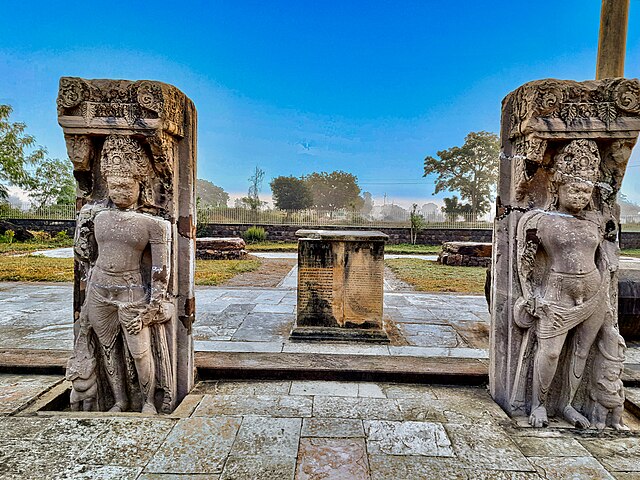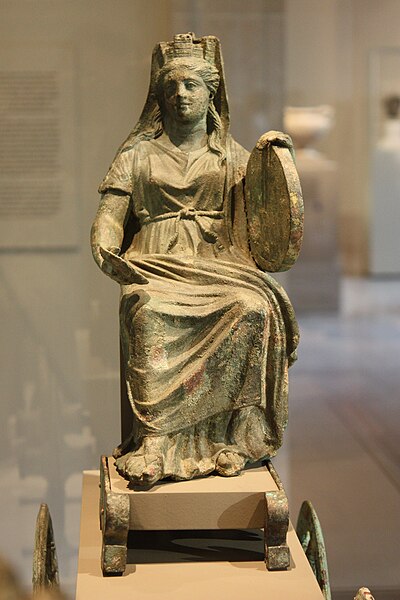A Dvarapala or Dvarapalaka is a door or gate guardian often portrayed as a warrior or fearsome giant, usually armed with a weapon - the most common being the gada (mace). The dvarapala statue is a widespread architectural element throughout Hindu, Buddhist, and Jaina cultures, as well as in areas influenced by them like Java.
Sondani, two Dvarapalas, circa 525 CE.
One of two pairs of dvarapala, 9th century Buddhist temple of Plaosan, Java, Indonesia.
Dvarapala in Elephanta India.
The largest dvarapala stone statue of Java, Singhasari period.
A tutelary is a deity or a spirit who is a guardian, patron, or protector of a particular place, geographic feature, person, lineage, nation, culture, or occupation. The etymology of "tutelary" expresses the concept of safety and thus of guardianship.
The mural crown of Cybele represents the walls of the city she protects
Lararium depicting tutelary deities of the house: the ancestral Genius (center) flanked by two Lares, with a guardian serpent below
Stone doors of a tomb of the period of the Northern Dynasties to Tʻang Dynasty, excavated in Ching-pien County of the city of Yü-lin, Shensi Province. It shows two figures with tridents as the guardian deities of the tomb.
A Thai spirit house for the Chao Thi in front of a car dealership in Bangkok








